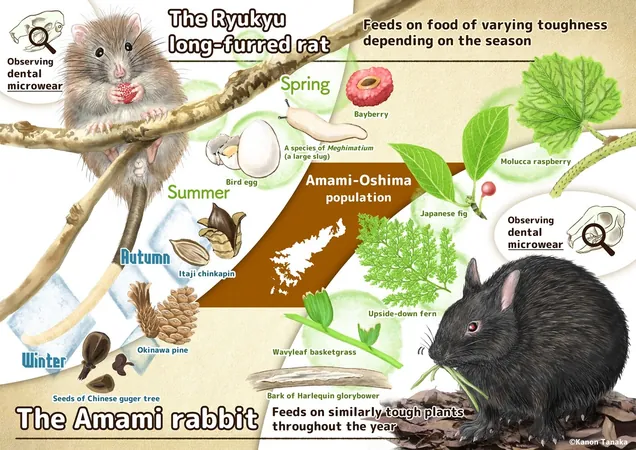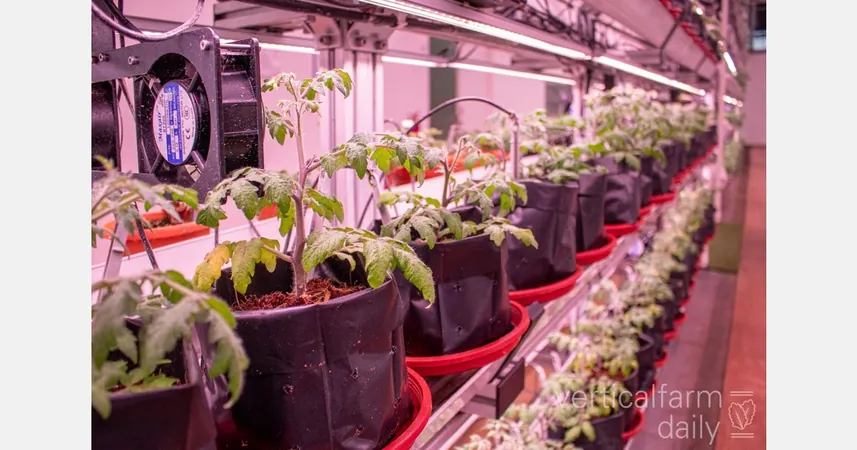
Unlocking Secrets Beneath Japanese Soil: Insights into the Diets of Rare Mammals for Conservation Efforts
2025-04-07
Author: Benjamin
Introduction
In a groundbreaking study, researchers from the University of Tokyo are diving deep into the diets of two of Japan's rarest mammals: the Amami rabbit and the Ryukyu long-furred rat. These elusive creatures, found exclusively in the Ryukyu Islands, including Okinawa, are not just cute symbols of biodiversity, but pivotal pieces in the puzzle of their ecosystem's health. With conservation efforts ramping up amid the growing threat of climate change, understanding their dietary needs has never been more crucial.
Research Findings
The research, recently published in *Mammal Study*, reveals intriguing dietary habits that have significant implications for conservation strategies. While the Amami rabbit maintains a consistent diet comprised mainly of tough plants like ferns throughout the year, the Ryukyu long-furred rat demonstrates more flexibility, shifting its food sources seasonally. During the warm summer months, these rats feast on soft foods such as fruits, slugs, and eggs, while in colder seasons, they opt for hardier sustenance like seeds and acorns.
Expert Insights
"Climate change and human activities significantly impact these animals' habitats," explains Associate Professor Mugino Kubo. "Understanding their feeding patterns and ecological needs is vital for developing effective conservation strategies."
Methodology
To uncover these secrets, the team analyzed the microscopic wear patterns on the animals' teeth, employing advanced three-dimensional texture analysis. Interestingly, the dental samples came from unfortunate accident victims—wild specimens that were hit by vehicles. By contrasting these findings with the known diets of laboratory-raised rodents, researchers could infer the wild populations' eating habits without the daunting task of direct observation, which is nearly impossible given their rarity and elusive nature.
Future Research Plans
As these researchers push forward, there are plans for further investigations that could expand knowledge on these species by comparing populations across different islands within the Ryukyu chain. Additionally, by integrating DNA analysis, they hope to delve deeper into the ecological interactions and genetic health of these remarkable mammals, which are often referred to as "living fossils" due to their ancient lineage.
Conclusion
With the clock ticking amid an environmental crisis, this research underlines the urgent need for ecosystem management that reflects the seasonal dietary needs of these extraordinary creatures. What we learn could not only change the fate of the Amami rabbit and Ryukyu long-furred rat but also serve as a blueprint for preserving the biodiversity of the unique Ryukyu Islands. Keep an eye out for the upcoming studies—it’s a wild world out there, and we’re just getting started!









 Brasil (PT)
Brasil (PT)
 Canada (EN)
Canada (EN)
 Chile (ES)
Chile (ES)
 Česko (CS)
Česko (CS)
 대한민국 (KO)
대한민국 (KO)
 España (ES)
España (ES)
 France (FR)
France (FR)
 Hong Kong (EN)
Hong Kong (EN)
 Italia (IT)
Italia (IT)
 日本 (JA)
日本 (JA)
 Magyarország (HU)
Magyarország (HU)
 Norge (NO)
Norge (NO)
 Polska (PL)
Polska (PL)
 Schweiz (DE)
Schweiz (DE)
 Singapore (EN)
Singapore (EN)
 Sverige (SV)
Sverige (SV)
 Suomi (FI)
Suomi (FI)
 Türkiye (TR)
Türkiye (TR)
 الإمارات العربية المتحدة (AR)
الإمارات العربية المتحدة (AR)